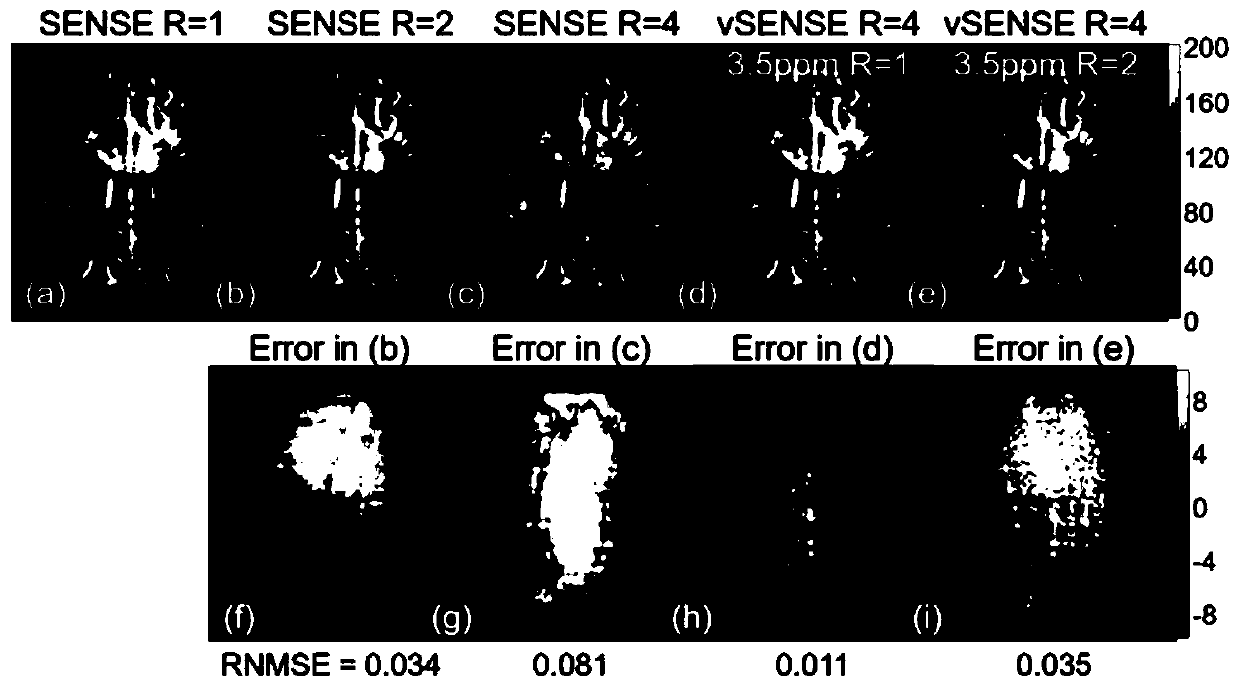CEST (Chemical Exchange Saturation Transfer) image reconstruction method and device based on variable acceleration sensitivity encoding
A sensitivity coding and image reconstruction technology, applied in the field of magnetic resonance imaging, can solve the problem of data acquisition speed prone to artifacts
- Summary
- Abstract
- Description
- Claims
- Application Information
AI Technical Summary
Problems solved by technology
Method used
Image
Examples
Embodiment
[0100] 1. MRI experiment
[0101] The brains of 7 healthy volunteers and 15 brain tumor patients were scanned with a 3 Tesla Philips Achieva scanner (Best, Netherlands) with a 32-channel head coil.
[0102] First, a SENSE reference scan (flip angle FA = 1 0 ; Repetition time (TR) = 4ms; Echo time (TE) = 0.8ms; Field of view (FOV) = 450×300×300mm 3 ;Resolution=4.7×4.7×3mm 3 ; average times = 3; duration = 39s). Structural images include double-echo T2-weighted fast spin-echo sequences (TR=2.8s; TE=10ms or 80ms; FOV=212×190×131mm 3 ;Resolution=1.1×1.1×2.2mm 3 ; duration = 2.4min), FLAIR (water inhibition inversion recovery) sequence (TR = 11s; TE = 120ms; FOV = 212 × 189 × 132mm 3 ;Resolution=0.8×1.1×2.2mm 3 ; inversion time TI=2.8s; duration=3.9min) and T1-weighted MPRAGE (44) (pre-magnetization fast gradient echo sequence) sequences (TR=8ms; TE=3.7ms; FOV=212×172×165mm 3 ;Resolution=1×1×1.1mm 3 ; TI=0.8s; Duration=3.4min). For some patients with brain tumors, MRI with...
PUM
 Login to View More
Login to View More Abstract
Description
Claims
Application Information
 Login to View More
Login to View More - R&D
- Intellectual Property
- Life Sciences
- Materials
- Tech Scout
- Unparalleled Data Quality
- Higher Quality Content
- 60% Fewer Hallucinations
Browse by: Latest US Patents, China's latest patents, Technical Efficacy Thesaurus, Application Domain, Technology Topic, Popular Technical Reports.
© 2025 PatSnap. All rights reserved.Legal|Privacy policy|Modern Slavery Act Transparency Statement|Sitemap|About US| Contact US: help@patsnap.com



